Flowers can be symbolic to almost every culture that it is natively found in. They can be steeped in centuries of customs and traditions that are typically associated with them, and they can sometimes evoke powerful emotions and collective thoughts in most of the nation’s citizens. In this article, let’s take a look at culturally important Chinese flowers.
Flowers in Chinese culture are held in high regard. They are, in fact, most typically seen in the different Chinese art forms, such as paintings and sculptures, to literature, such as prose and poetry.
Flowers in the traditional Chinese culture can mean a variety of positive signs such as luck, fortune, health and wealth, and even love! What makes this even more impressive is that the nation has a diverse range of climates which allows for a diversity of their flowers, shrubs, and trees. Some of the more popular flowers of The East can only be found here.
Without further ado, let’s go and delve into the rich diversity of Chinese Blossoms! Along the way, maybe we can even learn to grow one of them for ourselves as well.
1. Chinese Rose (Rosa chinensis)
The Chinese rose is one of the more popular flowers in China. It is also commonly called as the Bengal Rose or China rose and is native to the province of Hubei. Its beauty also earns it the nickname of “Queen of Flowers”, mostly gifted to romantic love partners to celebrate good luck, achievement, and birthdays.
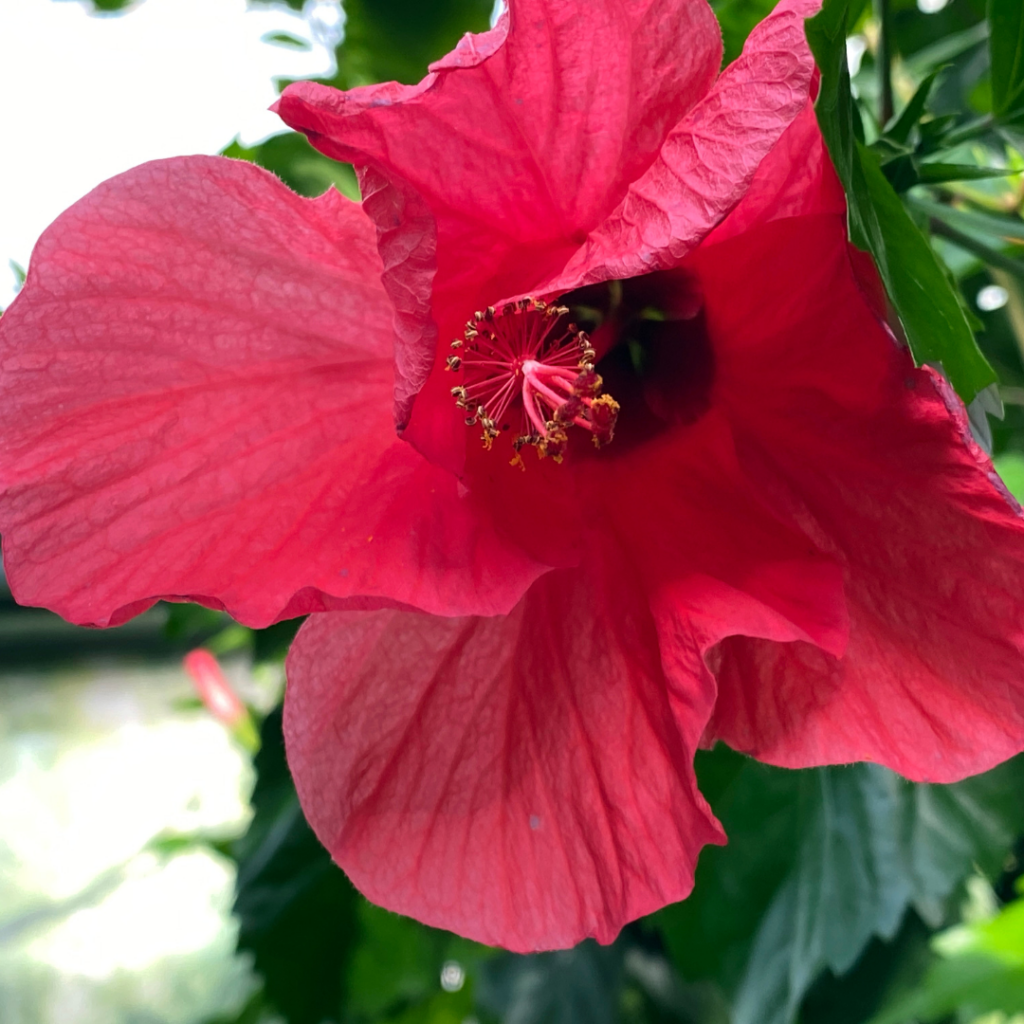
Unlike most flowering plants that grow in seasons, this flower produces blooms all year round. It comes in different shades of red. It is best grown in Zones 7 to 9 with full sun. Its most popular varieties include Spontaneoa and Rosa semperflorens.
2. Camellia Flowers (Camellia Japonica)
These plants can grow quite the size as compared to the other plants on this list. It is considered by South China as its national flower. Oftentimes, these plants represent the “sons and daughters” of Chinese culture. Other well-known symbolisms of this plant are faithfulness, passion, and desire.
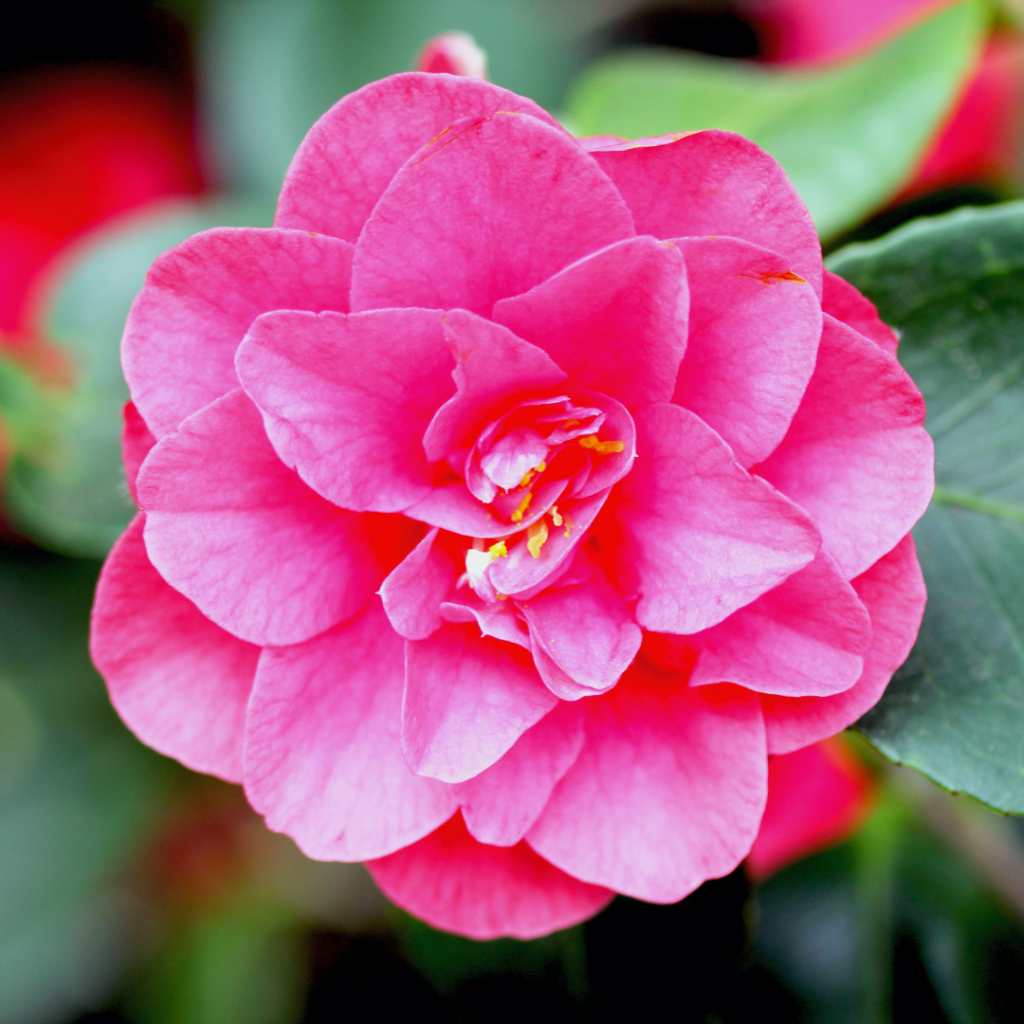
It is also mainly used to gather essential oils that are used for tea and also for the sharpening of knives and blades. It comes in a wonderful variety of colors, such as red, white, and pink. It’s best grown in Zone 6 and will mostly enjoy the partial shade. Popular varieties include April Tryst, April Rose, and Winter’s Rose.
3. Lotus (Nelumbo nucifera)
In Buddhism, the Lotus flower carries profound symbolism, usually meaning innocence and purity. Others believe that it is the very seat of the Buddha, thus making Lotus a holy flower to some. In addition, its gentle sway along the top of the waters symbolizes tranquility and beauty.
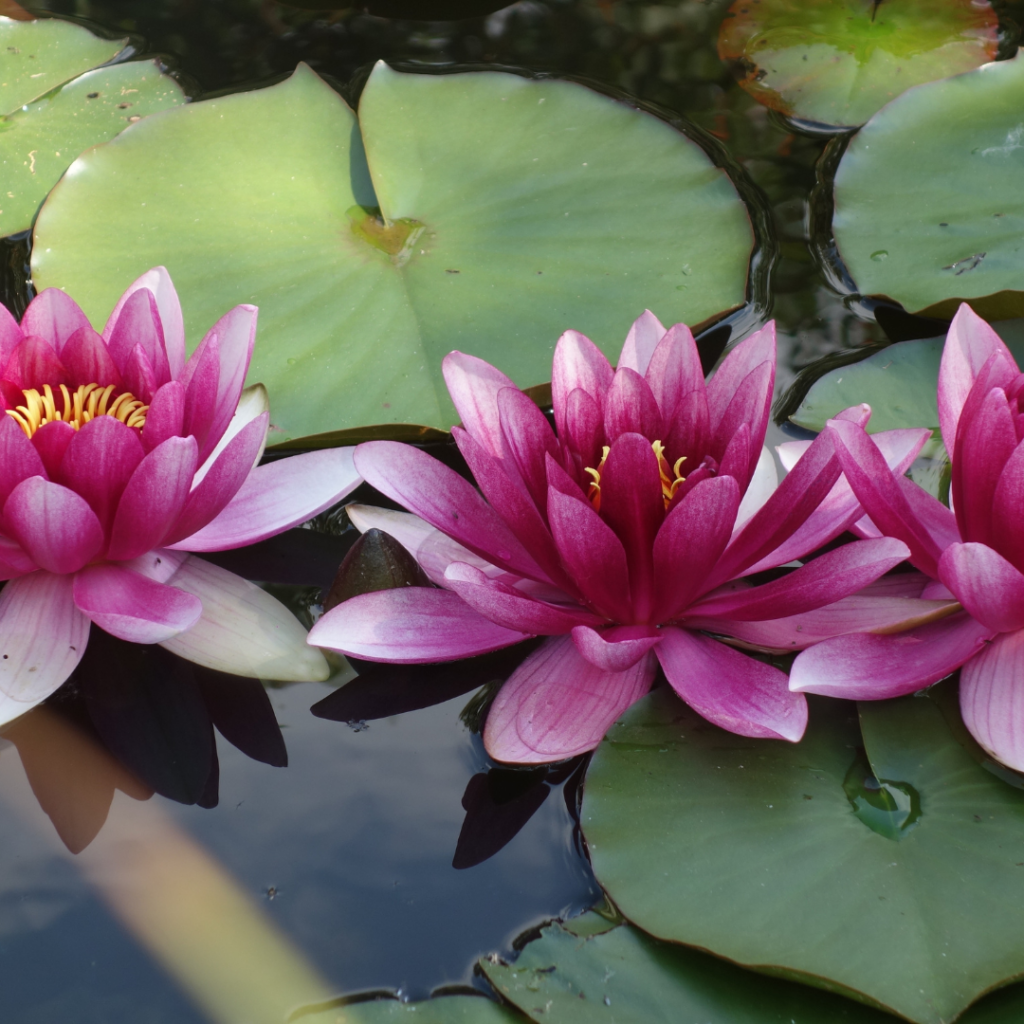
The Lotus is mostly used in Chinese culture as a natural remedy for a variety of illnesses such as fever, cough, and stomach pains. It is primarily grown in most ponds as well. This flower comes almost in a rainbow, with colors such as pink, yellow, white, purple, and blue! It is best grown in Zones 5 to 10 and under direct light for at least 6 hours.
Popular varieties include Pink China, Yellow Purple, and Beautiful Dancer.
4. Orchid (Orchidaceae)
In Chinese culture, the orchid flower symbolizes love, friendship, beauty, good luck, and marriage union. These plants have survived through several millennia, and there is recent evidence to support that they have been on Earth even before the shifting of continents!
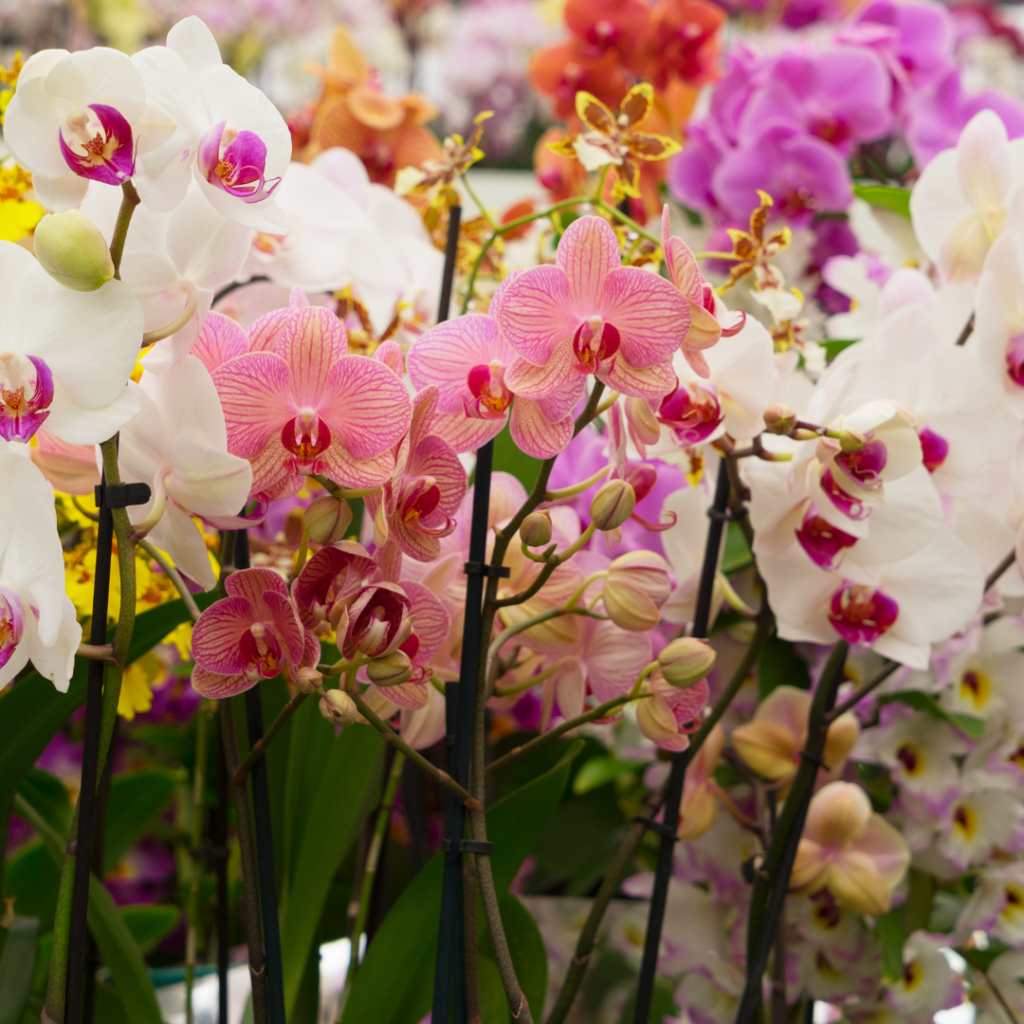
These plants are mostly found indoors, but hardy outdoor orchids are also available. With a multitude of orchid variants and subspecies also come a wide array of colors to choose from, such as blue, magenta, fuchsia, pink, yellow, and white! They grow best in Zone 8 and under indirect light. Popular varieties include Ladies Tresses, Lady Slippers, and Chinese ground orchids.
5. Chrysanthemum (Chrysanthemum)
The Chinese were one of the first cultures to start cultivating the Chrysanthemums hundreds of years ago. Ancient Chinese texts mention these flowers as old as the 15th Century BC. The Chrystanthemum’s rough translation in Chinese means long life and vitality. They also symbolize the coming of autumn and the 9th lunar month.

It is believed that the boiled roots of this flower can provide relief from headaches and colds. They come in striking red, yellow, white, and violet colors. They grow in a wide variety of climates, can thrive and tolerate Zones 5-9, and will require 6 hours of bright but indirect light. Popular varieties include single blooms, quilled blooms, spider blooms, and anemones.
6. Hibiscus (Hibiscus)
The Hibiscus flowers are one of the more popular blooms in China. This plant is a traditional medicinal herb in Chinese culture that is believed to promote a healthier appetite, relieve coughs and colds, headaches, promote diuresis, and even clear infections.
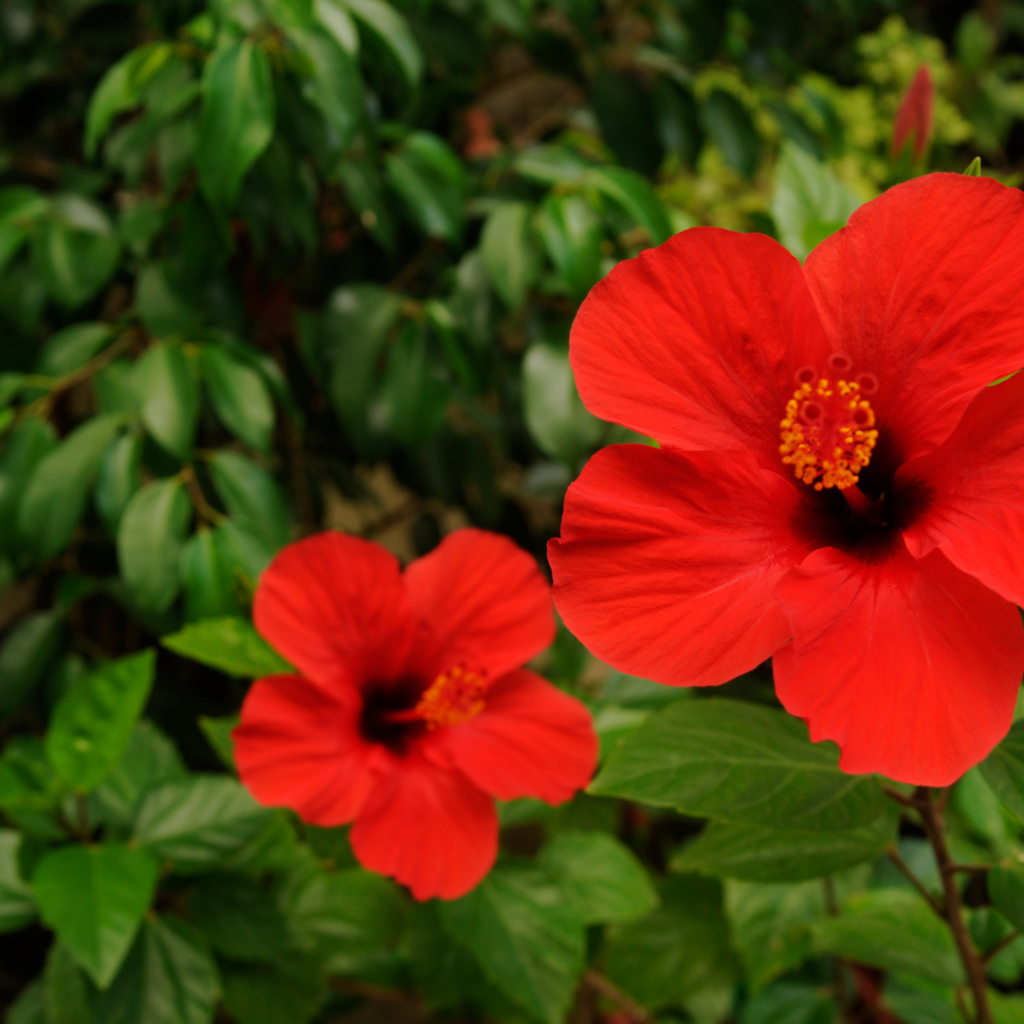
The plant petals can be used to make black dye for women’s hair or black polish for shoes. They also come in a wide assortment of colors, such as red, pink, yellow, orange, and other multicolor varieties. They grow best in Zones 8-11 and in full sunshine. Popular varieties include Rock Hibiscus, China rose, and Rose Mallow.
7. Magnolia (Magnolia)
This flower was selectively cultivated in the continent and is one of the most beloved flowers in China. In ancient China, this was one of the most sought-after and expensive flowers, owned only by the most influential such as Chinese emperors. They often symbolize honor, wealth, femininity, and purity.
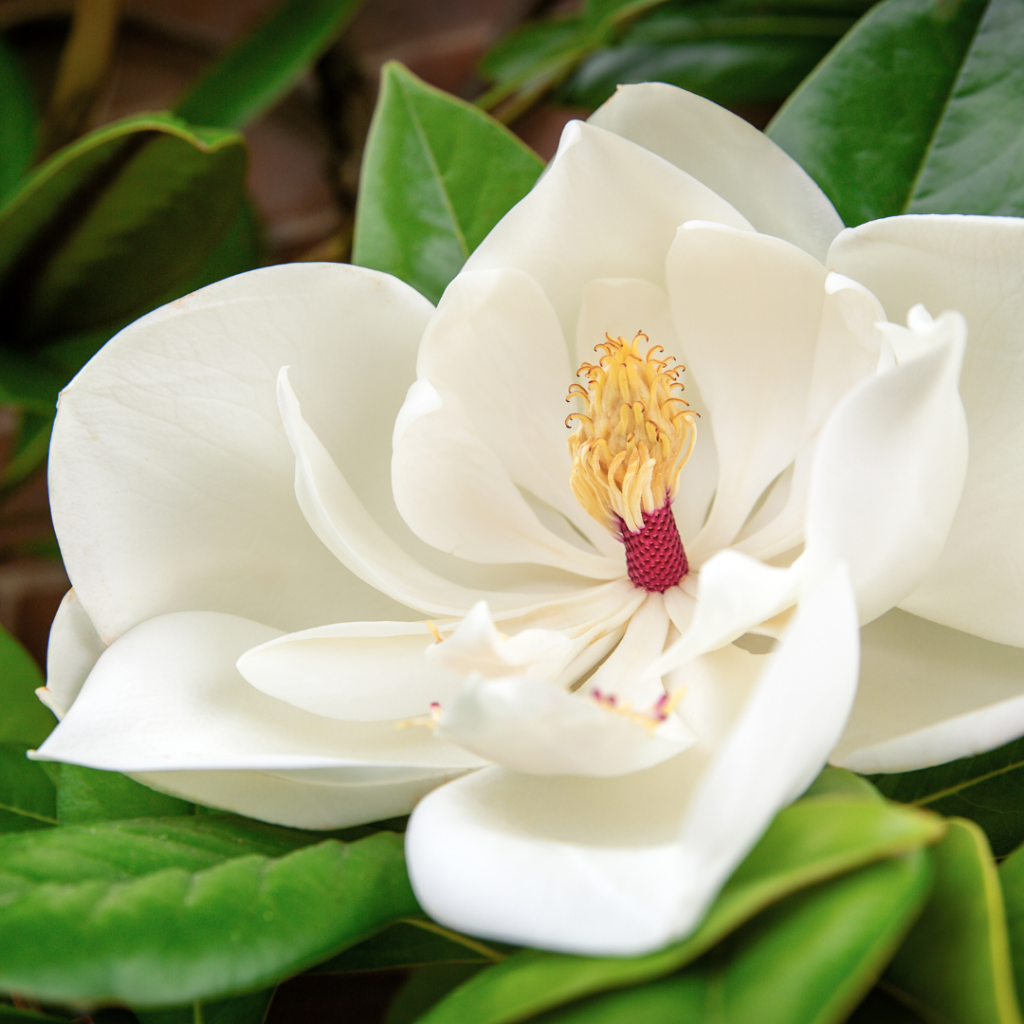
Magnolias also have their use in medicine, such as weight loss, depression and anxiety, headaches, asthma, indigestion, and constipation. Their colors range from white, pink, purple, and red. They do best in Zones 7-10 and under bright but indirect light. Popular varieties include Bigleaf Magnolia, Anise Magnolia, and Sauce Magnolia.
Related: 36 Beautiful Aglaonema (Chinese Evergreen) Varieties You Must Have
8. Iris (Iris)
This flower usually heralds the bright and warm days of summer and its breeze, with its petals fluttering about in the wind like dainty butterfly wings. Hence, it earns the nickname “Purple Butterfly”. It symbolizes good fortune and messages, purity, faith, and the start of something new.
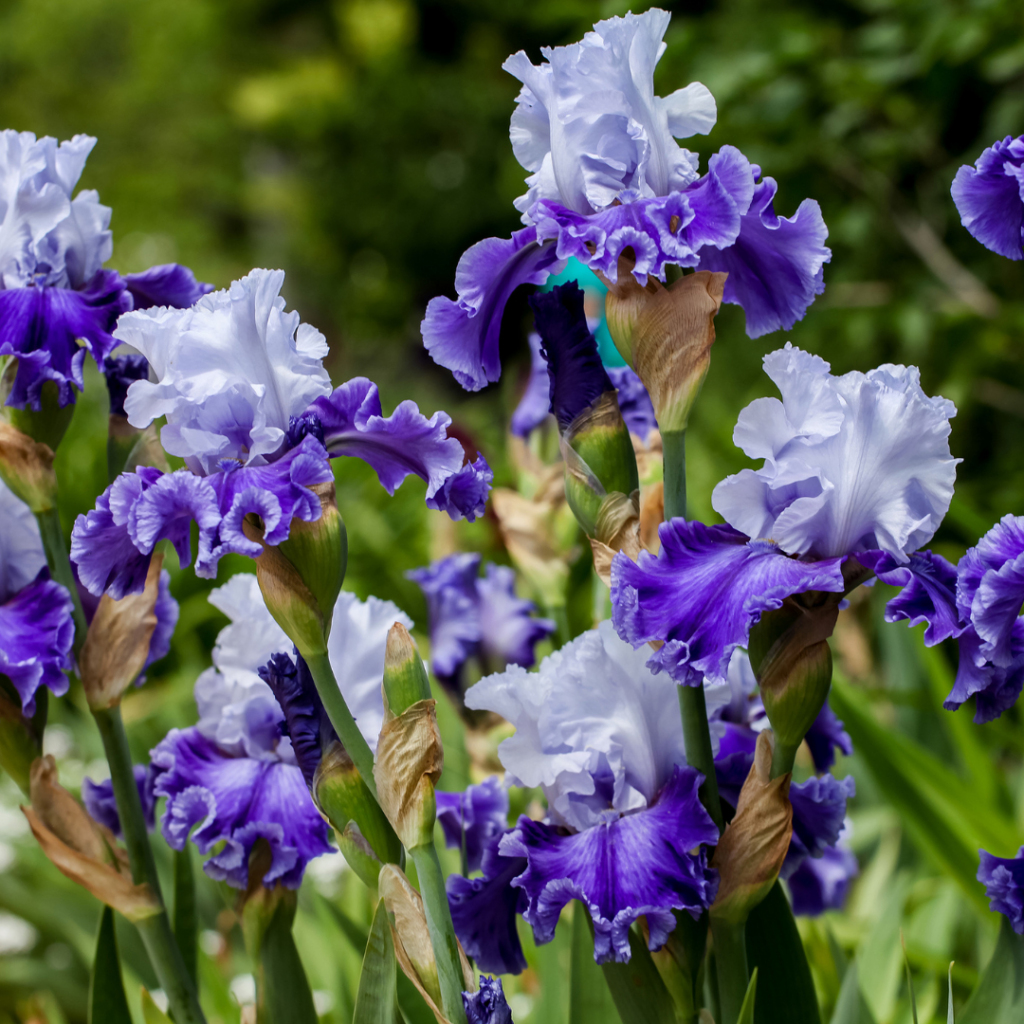
It is thought that this brings forth a long life when eaten. They come in bright blues, purple, orange, red, yellow, and white. They grow best in a wide array of Zones from 3-10 and under full sun. Popular varieties include Iris typhifolia, Bearded iris, Yellow Flag Iris, and Dwarf Iris.
9. Peony (Paeonia)
This bright and dainty flower has long been regarded highly in China. If there is a queen of flowers, then this is heralded the “King of Flowers” and is sometimes known as unofficially the national flower of China.
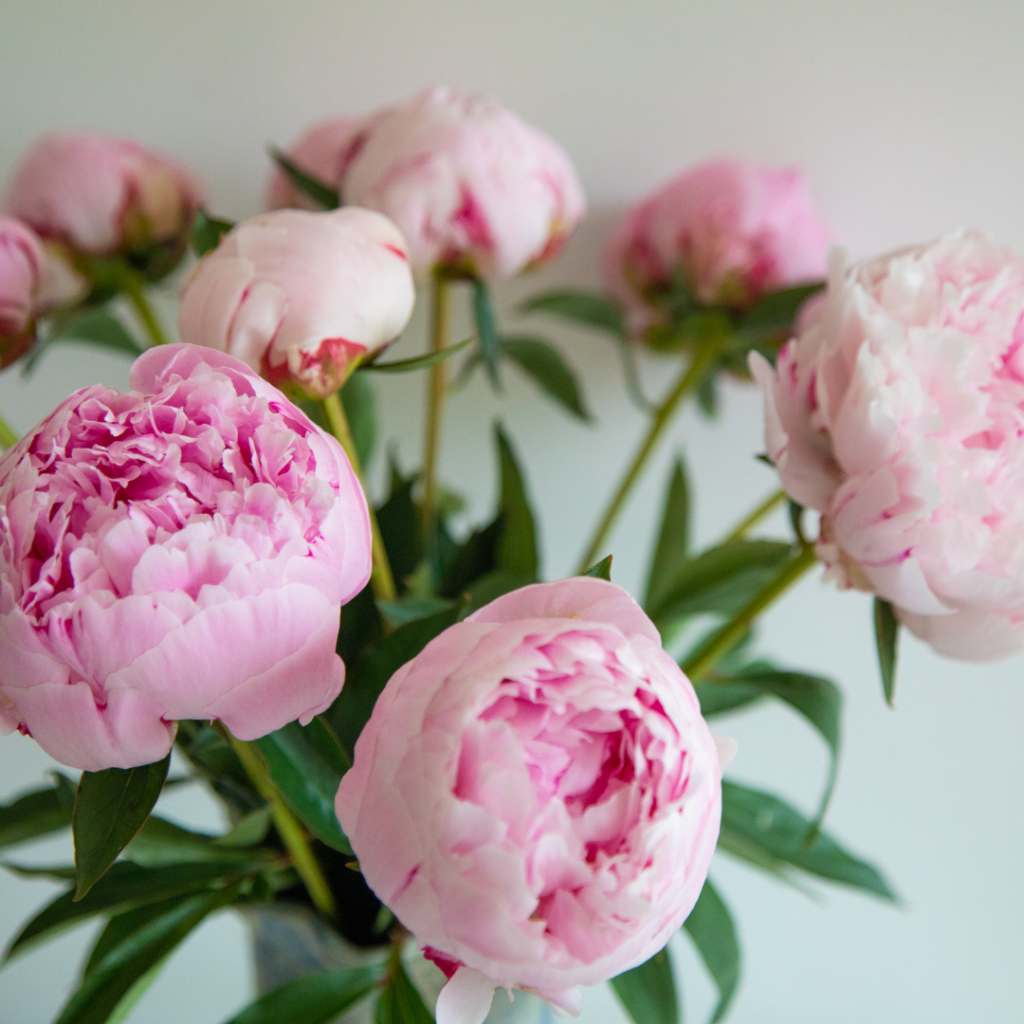
From ancient to the modern times, these were the choice flowers at weddings and were often sown on the clothings of imperial families. You could actually have your head cut off if a commoner were to wear peonies on their own clothes.
This flower symbolizes high value, prestige, honor, fame, wealth, and prosperity. They come in reds, pinks, and whites. They usually grow best in Zones 3 to 8 and will require bright but indirect sunlight, and sometimes full sun. Famous varieties include Sarah Bernardt, Karl Rosenfield, and Shirley Temple.
10. Chinese cucumber (Trichosanthes Kirilowi)
This flower has earned the nickname as the Chinese cucumber or Snake Gourd. It’s native to the regions of Shandong, Henan, Hebei, Shanxi, and Shaanxi. This plant is considered one of the 50 essential and fundamental herbs in Chinese medicine; hence, its meaning is one and only: health.
This flower only comes in white, grows in Zones 8-11 under full sunlight, and does not require any shade. Popular varieties include Snake gourd, Pointed gourd, and Indrayan.
11. Sunflower (Helianthus annuus)
This is a popular flower around the world and is not an exception in Chinese culture. It usually heralds long health and fortune. Therefore, it is opportune to bring sunflowers after graduation or at the beginning of new businesses or ventures. They symbolize great fortunes, health, vitality, and happiness.
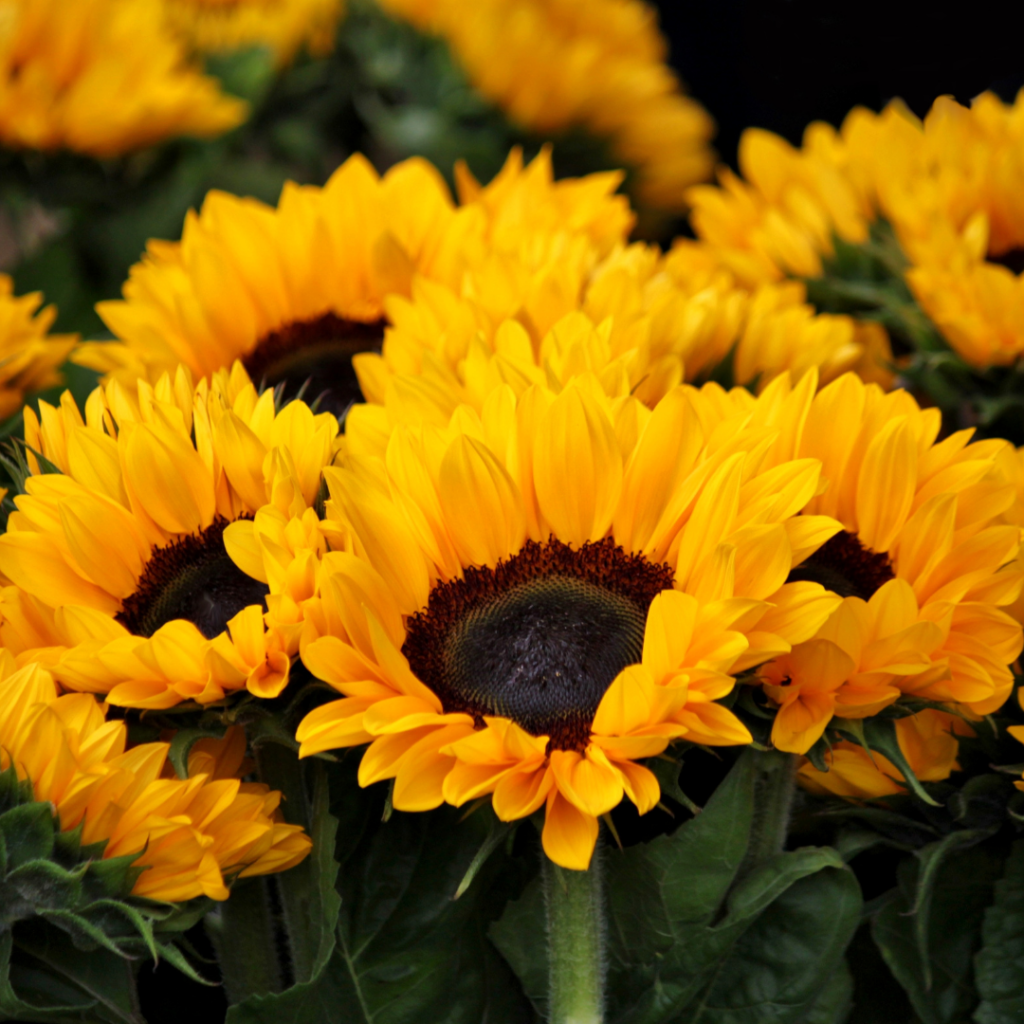
During the ancient times, it was thought that the sunflowers projected immortality, and their aristocracy ate the seeds as food snacks to attain such powers. Despite what their name might imply, they come in a variety of colors aside from yellow and gold, such as bronze, ruby red, and even white.
12. Azalea (Rhododendron)
A native flower in East Asia, it is one of the more meaningful decorative flowers in Chinese botanical archives. They were made popular by Tang Dynasty poets, inspired mostly by their sorrows, so much so that seeing these flowers reminded them of their precious loved ones.
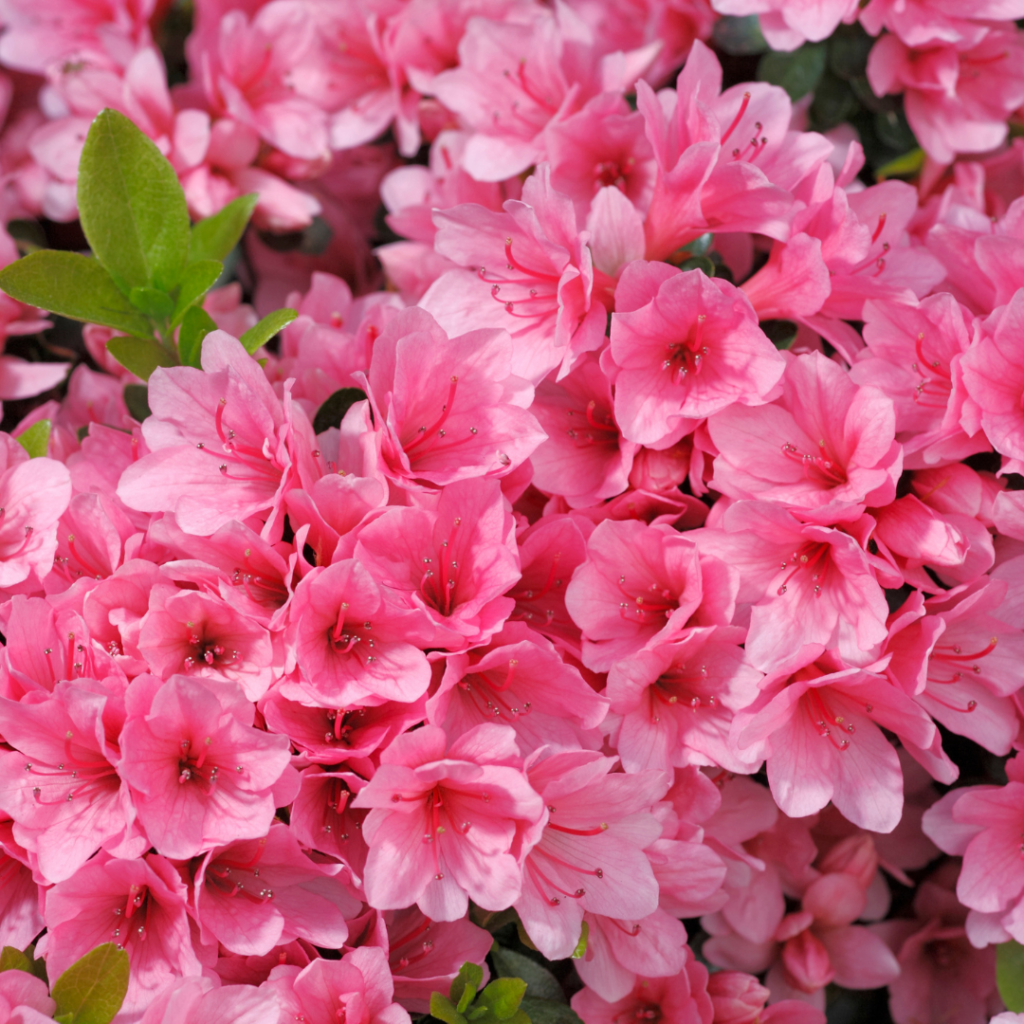
These were bred almost countlessly and thus yield different varieties with their own unique beauty. They come in warm reds, yellows, pinks, and whites. They grow best in Zones 6 to 9 and under bright but indirect light or full sun. Famous varieties include Northern hi-lights, Lemon Lights, and Encore Autumn Amethyst.
13. Daffodils (Narcissus)
The daffodil is known by many nicknames in Chinese culture as they thrive in many localities. They are famous for bringing good luck, jovial tidings, and rebirth. It symbolizes the Chinese New Year and is even associated with legends such as the goddess of water of the Xiang River. In the regions of the eastern part of China’s Fujian province, it is the most well-known flower.

These come in white, gold, and tangerine and grow best in Zones 8 to 11. They do well under full sun and partial shade. Wonderful varieties of this flower include Paperwhite, cream narcissus, joss flower, and Narcissus tazetta.
14. Osmanthus (Osmanthus fragrans)
Only the wealthiest and of high status during ancient times had permission to plant them. As a result, it is one of the most well-known flowers and is considered one of the ten most distinguished traditional flowers of China. Guilin, a well-known city, has thousands of Osmanthus trees that create a scenery almost heaven-like. This plant symbolizes nobility, prosperity, faithfulness, and fertility.
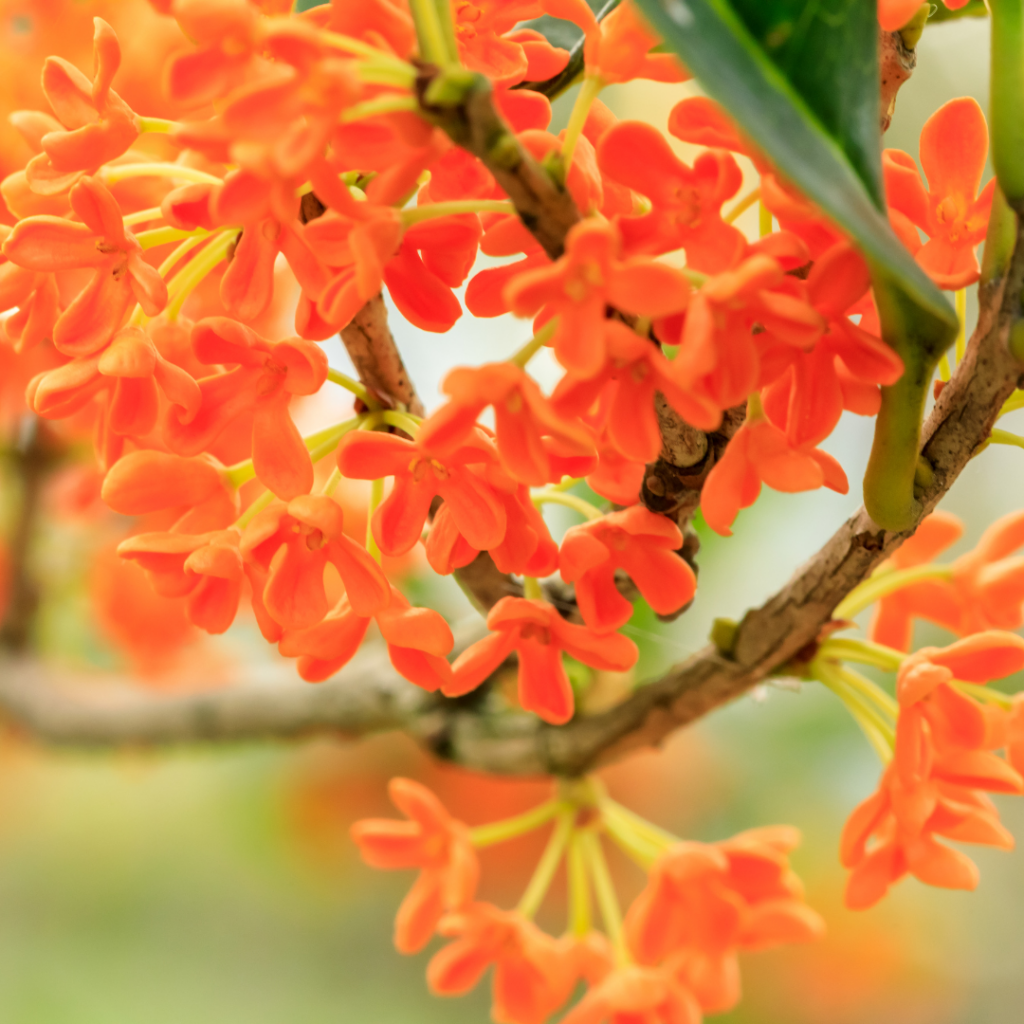
The oils of this flower have been used in flower-scented tea and have been grown for thousands of years. They come in muted colors but are nevertheless beautiful to behold, colors such as white, pale shades of yellow, red, and orange. They grow in Zones 9 to 11 and require full sun to a partial shade. Well-known varieties include Fudingzhu, Orange Supreme, Apricot Gold, and Butter Yellow.
15. Rhododendron (Rhododendron)
Also known as the “Venus of flowers”, Rhododendron is one of the most renowned flowering plants in China. Poets and scholars of the Tang Dynasty often reference this plant due to its allure and are described by them as all the other flowers pale in comparison to this. This flower symbolizes innocence and purity, beauty, and devotion.
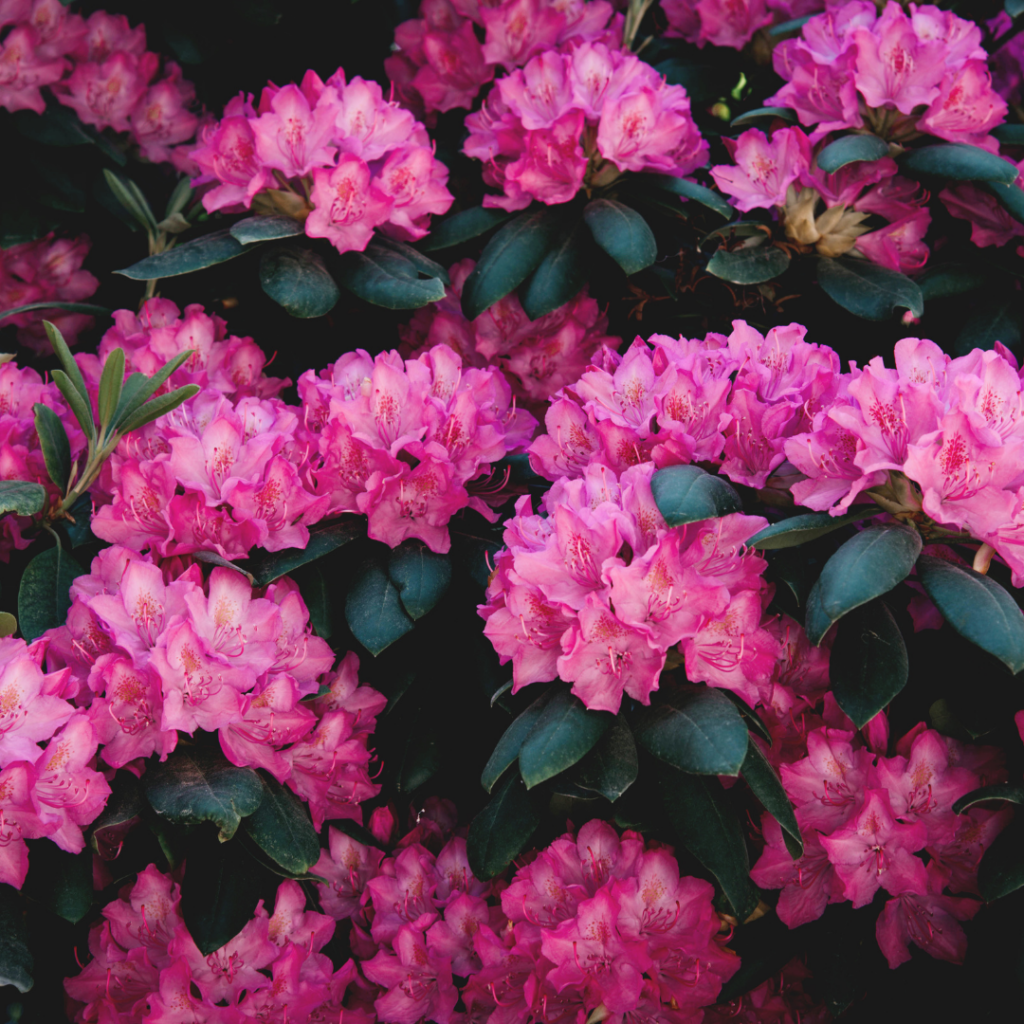
This flower can be similar to the Azaleas but mainly differs in time of blooms, flower morphology, and foliage anatomies. They come in bright whites, purples, pinks, and reds. They grow best in Zones 8 to 10 and under part shade or full shade. Popular varieties include Champions, Westlands, Hong Kong, and Mrs. Farrer’s.
16. Gardenia (Gardenia)
The rose-like gardenia is a symbol of November and is a representation of feminine grace and strength in Chinese tradition and culture. Women traditionally embellished their hair and garments with gardenia. They also represented clarity, hope, renewal, and trust.
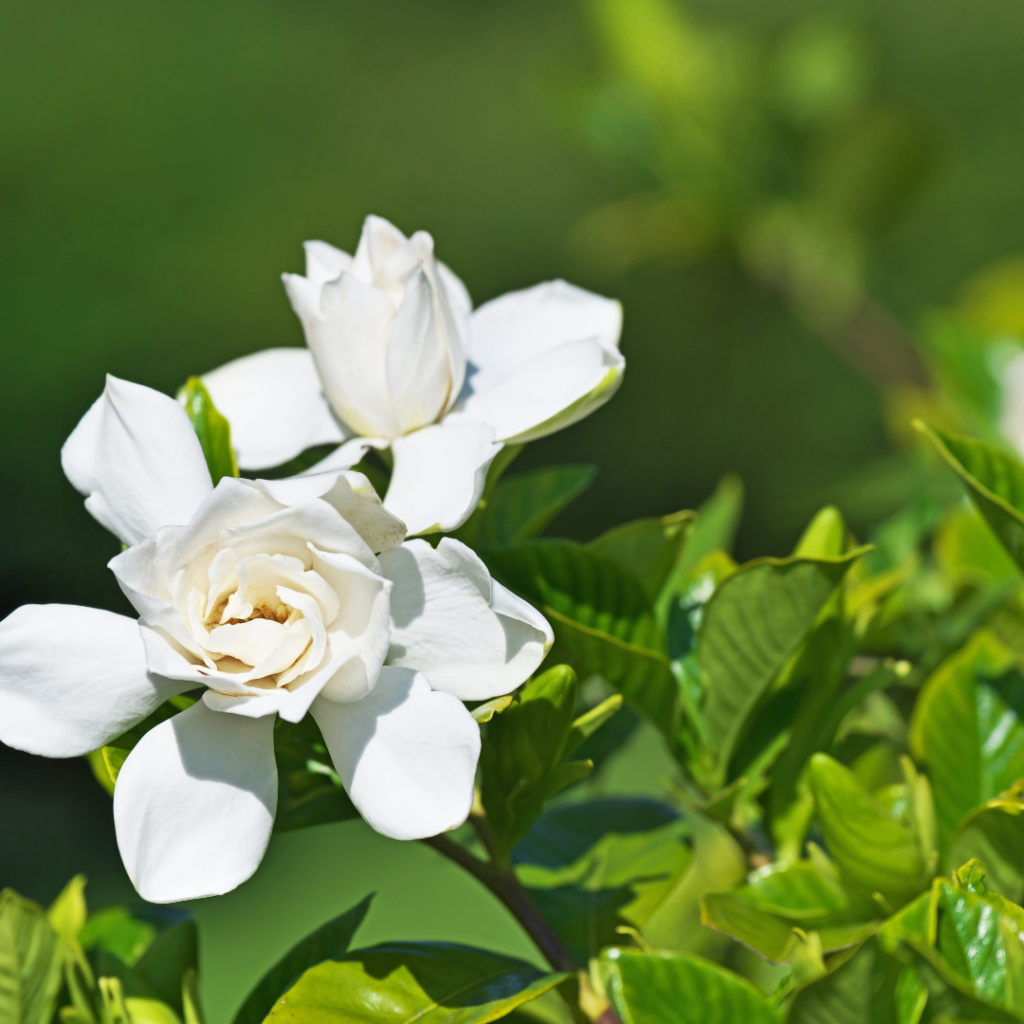
Gardenias are also a vital component in the making of fragrances, cosmetics, and incense. The flower seeds were also used in the creation of yellow dyes. They come in whites, yellows, reds, and pinks. They thrive best in Zones 8 to 11 and under bright but indirect sunlight. Famous varieties include Four Seasons, Golden Magic, and August Beauty.
17. Jasmine (Jasminum)
The dainty Jasmine was grown as far back as Western Han Dynasty during the 206 BC in the biggest city of Fujian province in China. In their culture, it symbolizes eternal love and is considered a holy flower of Buddhism. It’s nicknamed “Queen of the Night” as its fragrance is considered heavenly by most.
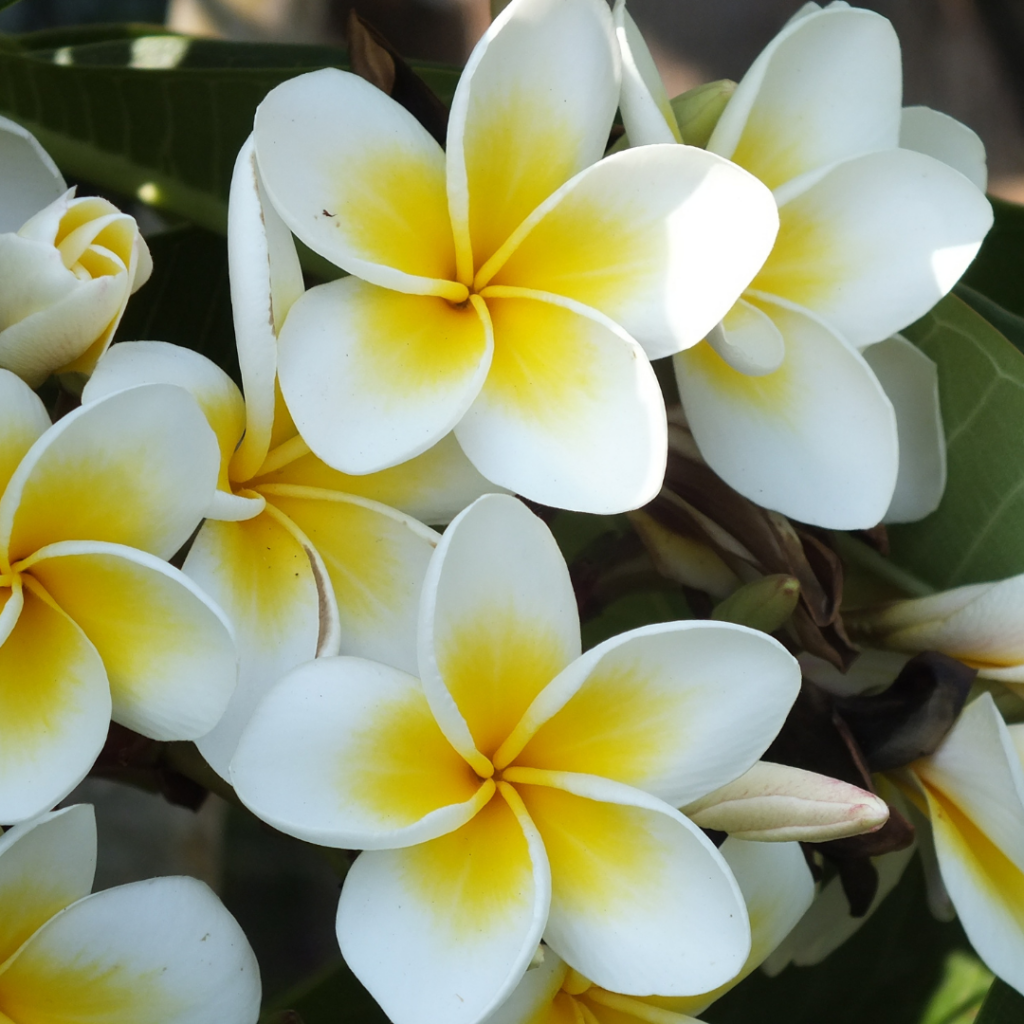
This plant usually symbolizes sensuality, love, and grace. They come in yellows and bicolor blooms. They happily thrive in Zones 8 to 10 and thrive best in full sun and partial shade. Popular varieties include Royal Jasmine, Winter Jasmine, and Dwarf Jasmine.
Related: 20 Different Types Of Chinese Trees
18. Lilies (Lillium)
Just as they are well known around the world, so they are too in Chinese culture. They signify joviality, good luck, purity, and love. They are often given to women during weddings and birthdays. Conventional culture of China favored boy children, and this flower usually signified that a boy was coming along.
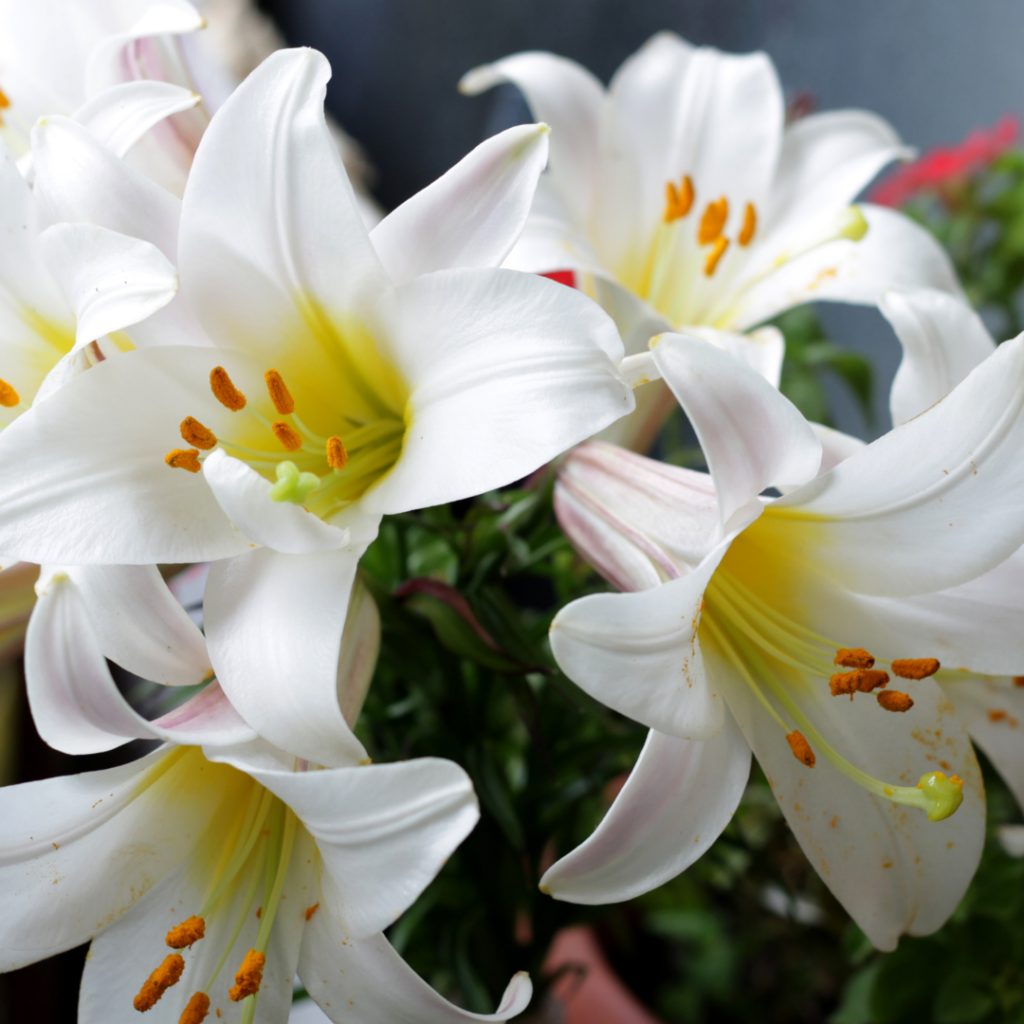
This flower comes in a wide assortment of colors that ranges from white, yellow, pink, fuchsia, red, and orange. They thrive in a wide array of environments ranging from Zones 4 to 9 and under full sun, partial shade, or even light shade. Popular varieties include Oriental lilies, Asiatic lilies, and trumpet lilies.
19. Aster (Asteraceae)
These flowers are “composite” flowers as they have a core in the center composed of hundreds of tiny little flowers with distinctively lengthy petals. These flowers were used in Chinese traditional medicine to treat coughs and colds, lung problems, hangovers, and indigestion. In addition, these represent wisdom, faith, and love.

These wonderful dainty flowers come in striking white, purples, reds, and pinks. They grow in an extensive growing condition, the widest on this list, from Zones 2 to 11 and under bright sun to part shade. Popular varieties include Crego Giant, Fireworks, Gala, and Gremlin Double.
20. Wintersweet (Chimonanthus praecox)
This flower earns the nickname Flower of December because they only bloom in the harshest winters. They have bowl-shaped blossoms that have sweet scents. They symbolize fearlessness, strength, and unbending will.
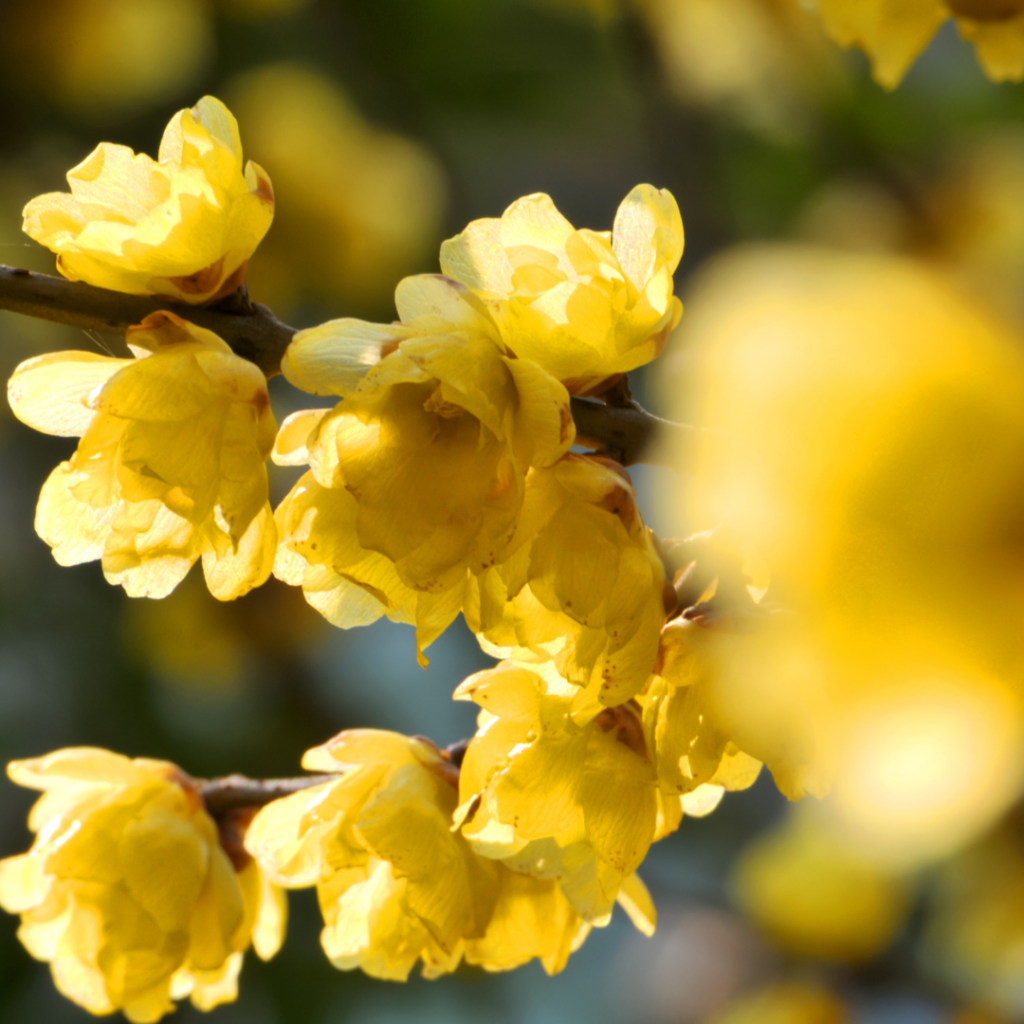
Wintersweets usually produce flowers from November all throughout March and are cold-tolerant. They come in bright yellow, purple, gold, red, and white varieties. They thrive best in Zones 7 to 9 and under full to part shade. Popular varieties include Grandiflorus and Luteus.
21. Balsamine (Impatiens balsamina)
Also known as the “Flower of July” in China, these flowers fastly grow to as high as 30 inches; however, they are even taller in their natural habitat. They represent fervor, charm, and charisma. Therefore, some varieties have medicinal uses and are a favorite in Chinese remedies, especially for skin conditions.
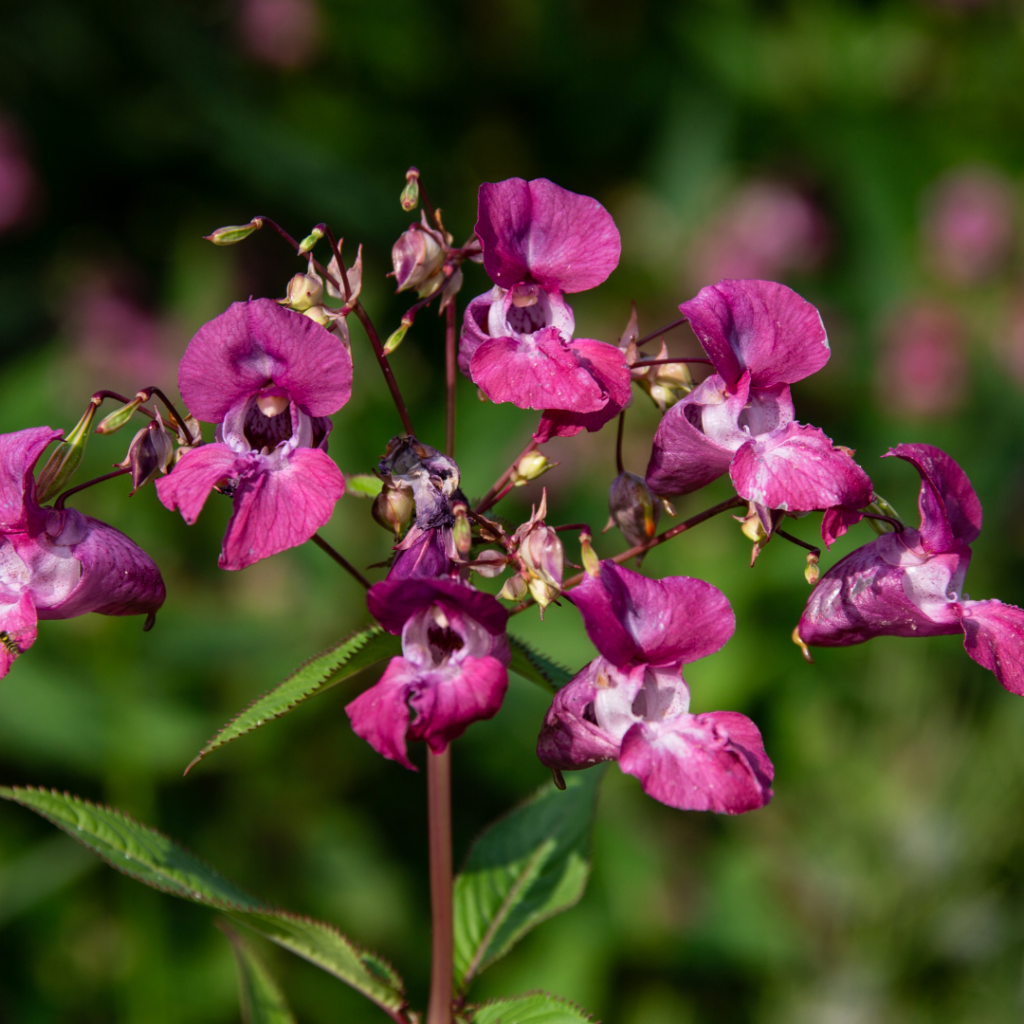
They come in gorgeous reds, pinks, purples, and this. These plants tolerate a wide variety of Zones from 2-11 and happily grow under full sun or partial shade. Wonderful varieties include Garden Balsam, Rose Balsam, and Spotted Snapweed.
22. Water Lilies (Nymphaceae)
The rough translation of this flower in Chinese is “Sleeping Lotus”. They have been bred as decorative flowers for almost 3000 years. Legends tell of this flower as being previously a start that fell onto Earth and transformed into a beautiful water lily.

In Buddhist and Chinese traditions, they generally symbolize purity, divine birth, regeneration, and resurrection.
These wonderful flowers close at night and open in the morning upon first light, hence their symbolism of resurrection. They come in white, pink, red, yellow, and orange pastel colors. They grow in zones 9 to 11 for tropical varieties and 4 to 11 for hardy varieties, usually under 6 hours of direct light as a minimum. Popular varieties include Pale Moon, Morning Mist, and Maroon Pink.
23. Chinese Sacred Lily (Narcissus tazetta)
We have already talked about Narcissus earlier in this article, but this variety deserves special mention. This lily was bred in many parts of China for approximately 1000 years and is also part of the top ten well-known flowers in China thanks to the beauty it projects and the fragrance it brings. It symbolizes abundance, beauty, good luck, and purity.
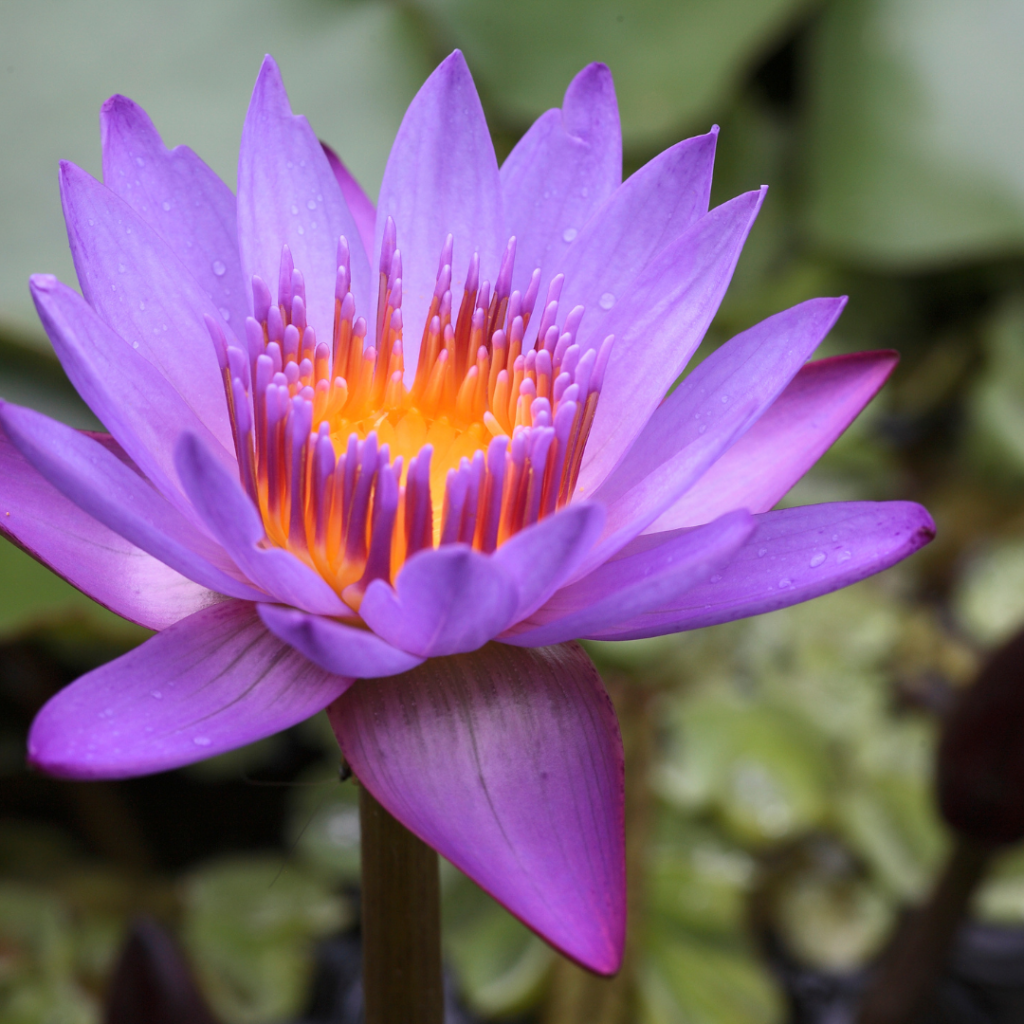
This is a must for most households, especially during the anticipated Chinese Spring Festival. They come in tangerines, whites, and oranges. They grow best in Zones 1 to 10 under full sun to part shade. Popular varieties include Bunch Flowered Daffodil and Polyanthus Daffodil.
24. Ranunculus (Ranunculus)
With a nickname “Buttercups”, these flowers have around 80 species and nine vining varieties that are thoroughly dispersed all throughout China. They symbolize adaptability, perseverance, divinity, and charm.

These flowers were traditionally used in Chinese medicine and for divination for the teachings of spirituality and wisdom. They come in bright pinks, reds, yellows, and whites. They grow best in Zones 8-10 under full sun. Wonderful varieties include Meadow Buttercup, Persian Buttercup, and Hairy Buttercup.
25. Tulips (Tulipa)
Tulips are well renowned across the world, including China. They wildly grew in the provinces of the Tian Shan in their mountains even before the turn of the 17th century, when these plants were regarded as exotic collector’s treasures. They catch the eyes of their admirers even before ancient times, and they symbolize the declaration of romance and love and symbolizes the beginnings of something fresh to start.
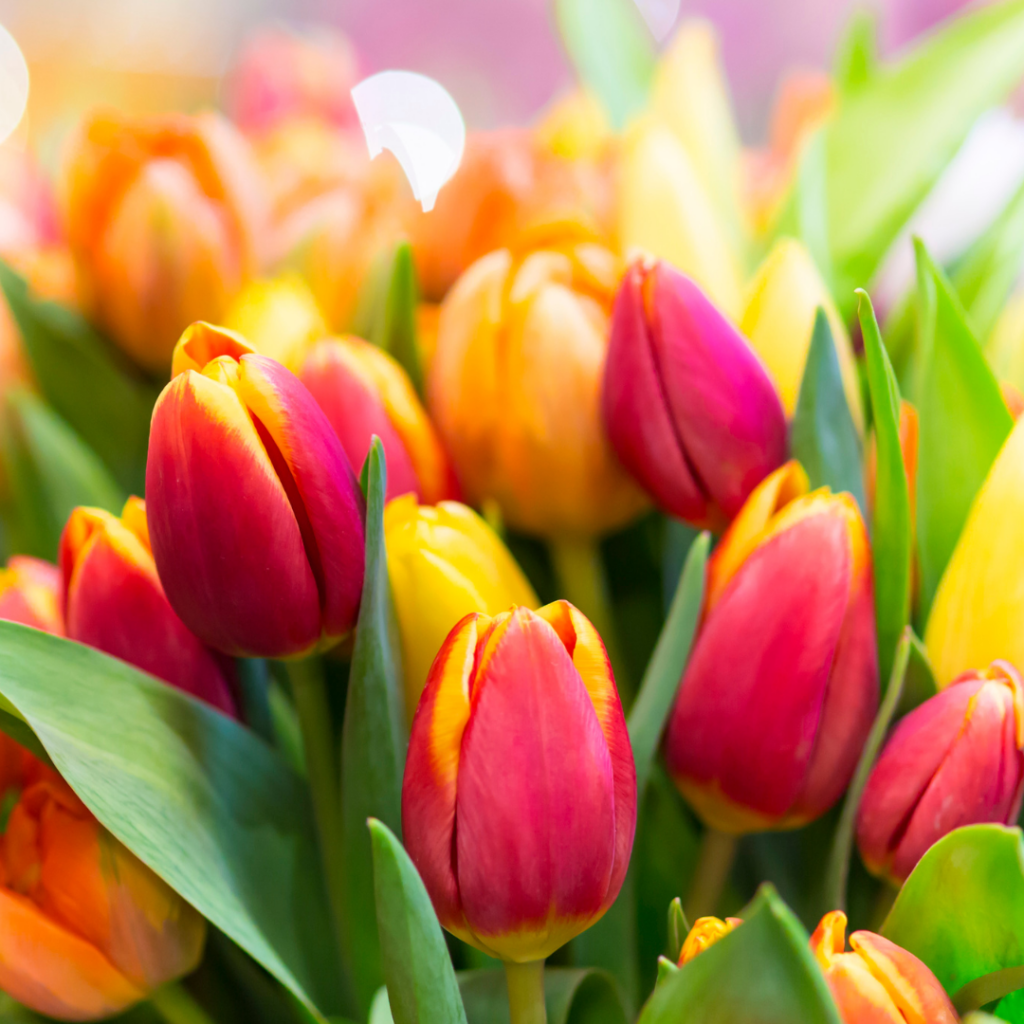
These flowers come in gorgeous shades of whites, reds, pinks, purples, and yellows. They thrive in zones 3-8 and under bright direct light. Well-known varieties include Darwin Tulips, Triumph Tulips, and Fringed Tulips.
26. Chinese Carnation (Dianthus chinensis)
Commonly called the China Pink, this flower features a dazzling display of colors, thus making it ideal for flower beds, garden boxes, and trailing edges. In Chinese culture, they symbolize curiosity, love, and gratitude.
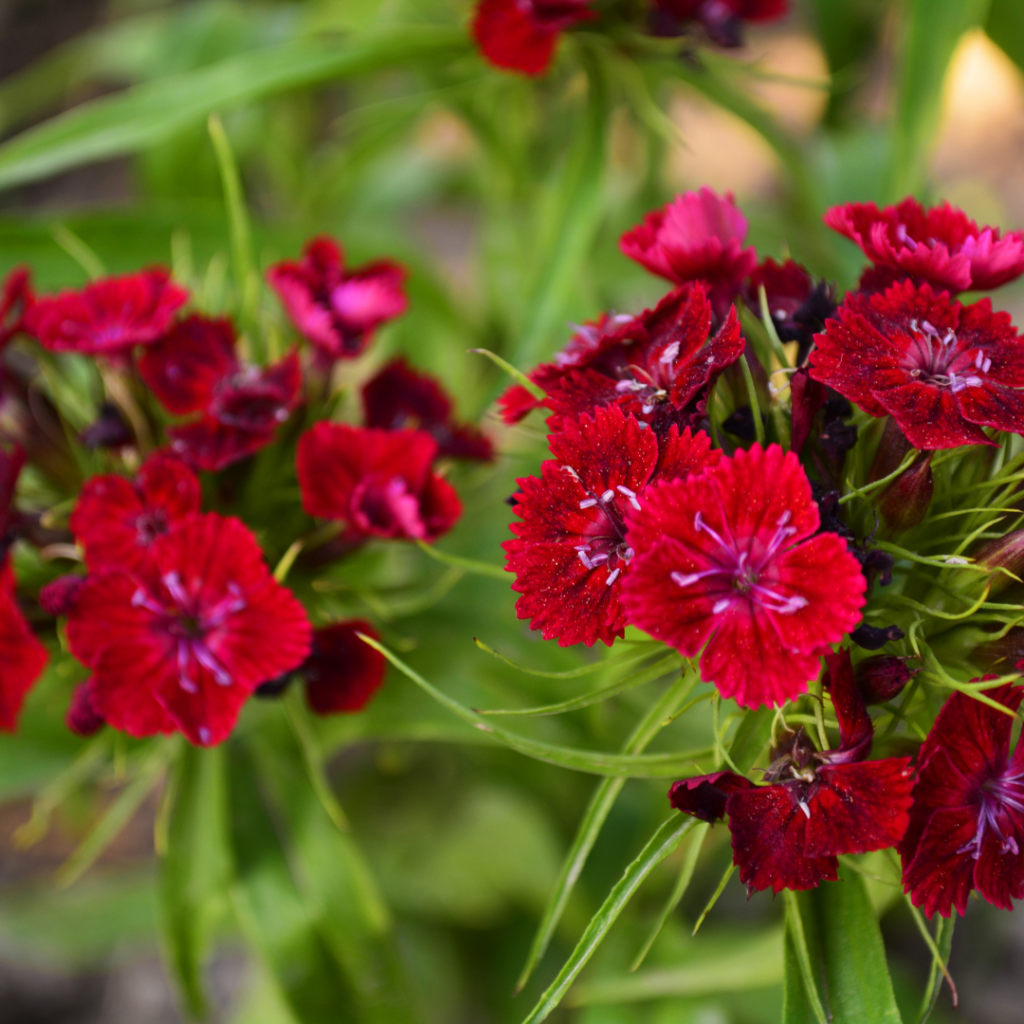
You can plant them in early February, and their maintenance does not require much work. This plant offers a lengthened period of bloom from March all the way to October. They come in solid colors or mixed colors ranging from red, pink, and purple.
They thrive in Zones 6-9 and grow best in full sun to partial shade. Popular shades include Floral Lace Crimson and Diamond Blush Pink.
27. Sweet Olive Flowers
Also one of the more famous flowers in China for their multiple uses such as tea, jams, and traditional medicines. Due to their many uses, they have symbolized love, fruitfulness, and fertility. They are also used as gifts during weddings.
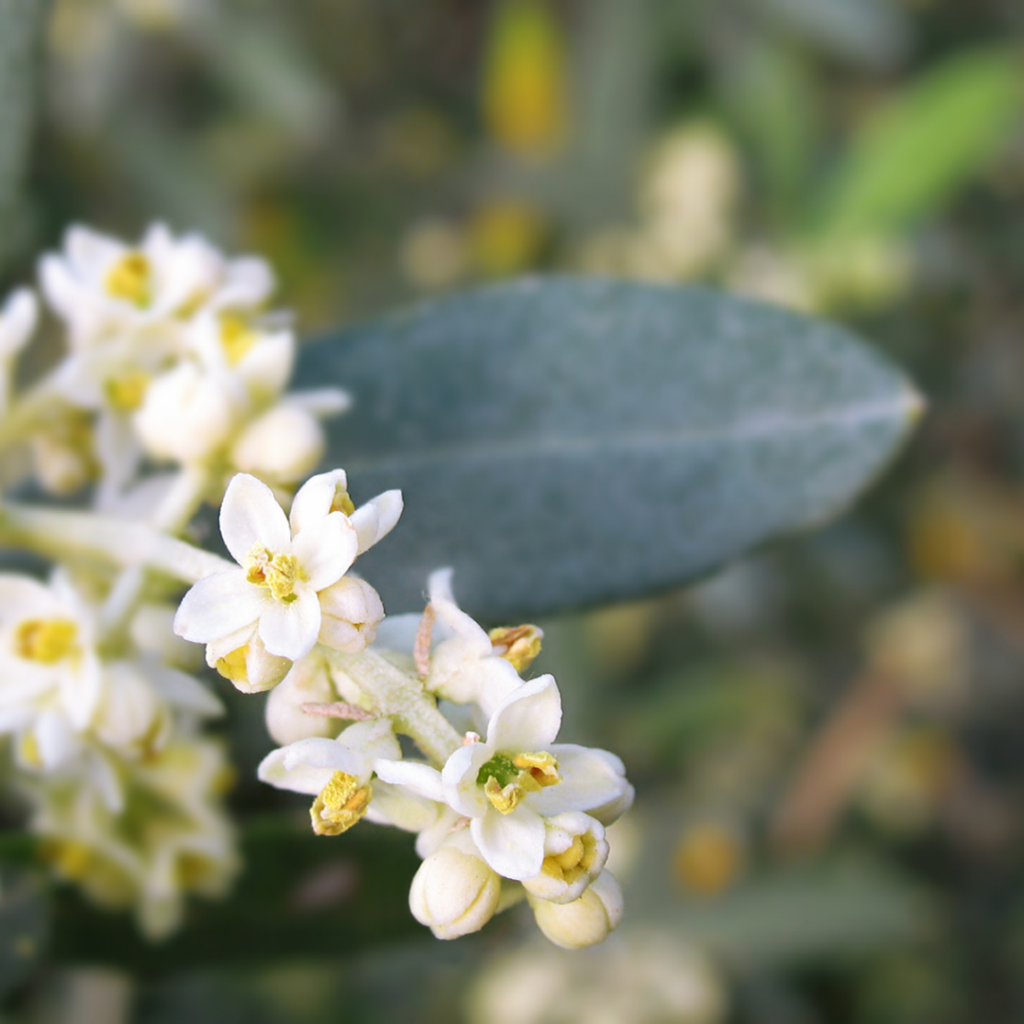
These flowers come in yellow, reds, oranges, and whites. They grow in Zones 9-11 and thrive happily under full sun to partial sun. Some well-known varieties include Aurantiacus, Conger Yellow, and Thunbergii.
28. Chinese Plum Blossom (Prunus mume)
Better known as the Plum Blossoms, they are one of the oldest flowers that have been discovered in China. It is native to their local area and is especially known because they only bloom in the winter when there is still snow around. Due to their hardy nature, they symbolize vitality, vigor, courage, and strength.
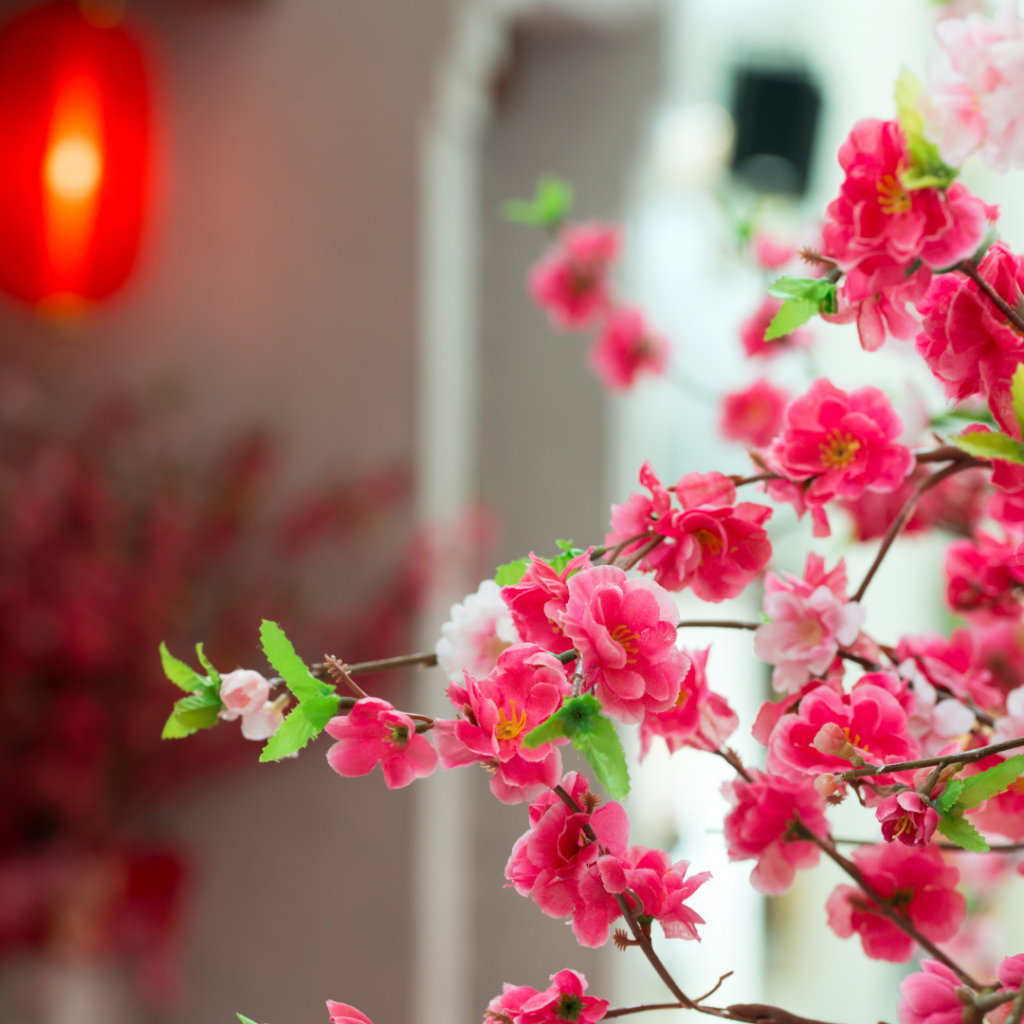
These flowers usually come in pastel whites, reds, and pinks. They grow best in Zones 4-6 under full sun to partial shade. Their varieties include Bonita, Dawn, and Peggy Clark.
CONCLUSION
As you may have seen from this list, Chinese culture is genuinely steeped in thousands of years of tradition. The reason being is that they are some of the world’s oldest and richest civilizations. Their symbolisms all come from social, religious, philosophical, and even medicinal elements and are respected by most in China.
When you luckily come across these flowers blooming, try figuring out their history and origins. You might find yourself surprised that these flowers convey positive messages that will surely make your life bright and meaningful.
Editor’s Recommendations
Se-Dum Beautiful! 7 Types Of Sedum Flowers
Common Lawn Weeds With Yellow Flowers (And How To Get Rid Of Them?)
Top 10 Weeds With Purple Flowers (And How To Get Rid Of Them?)







